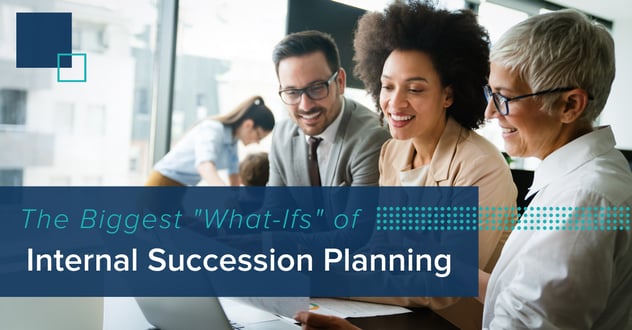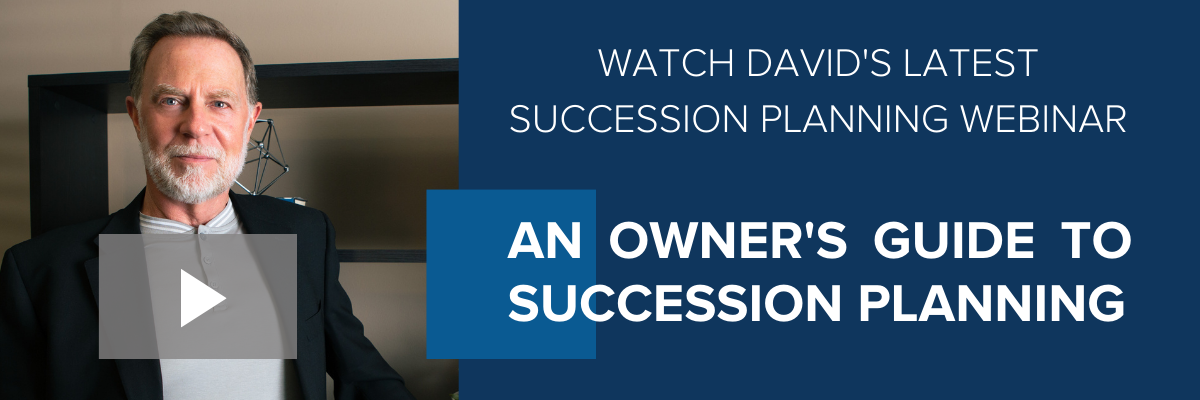Blog
The Biggest "What-Ifs" of Internal Succession Planning


I have one of the best jobs in the financial services industry. Every day, I get to talk to independent advisors, young and old, and together we plan for the future. The journey of building a business that can outlive its founder is exciting, rewarding and, maybe, a little perilous – certainly, there are plenty of unknowns and first time experiences. In our experience at FP Transitions, there are two primary concerns that surface above all others.
1. WHAT IF MY PLAN FAILS?
One of the first questions that G1 (first generation / founding) owners ask is, “What happens if my succession plan doesn’t work out?” They want to know what happens if the next generation advisors they’ve chosen aren’t actually up to the task of taking over what they’ve built.
The truth is, your plan might not work out. It’s important to understand that even though you’ve hand picked your successors from your best and most trusted team members, they might not be able to take on the responsibilities and nuances of ownership. So, while you’re working for the best possible outcome for your plan, you’re also building in safeguards and Plan B opportunities, just in case.
Provision #1 : Your Valuation
This journey started by discovering the market value of your business. The valuation process uses a methodology that looks at your value from a third-party buyer’s perspective. Within the scope of your internal transition, this information is necessary to determine the ownership buy-in. It also puts a fair price on the business for a sale on the open market.
If your succession plan falls through, you don’t need to take the time and energy for a complete revaluation with a different goal in mind. Through your initial valuation you’ve already taken an in-depth look at every aspect of your business. The resulting value serves both Plan A and Plan B.
Advisors should obtain a valuation with this specific end-goal in mind. Meaning, approaching your valuation should ideally start with a conversation with your consultant that covers your "why" statement. "Why are we completing this valuation today?" Once you define the outcome as building your internal succession plan, the focus of the valuation becomes more clear. Having the right partner guide you through this valuation experience is vital to understanding which levers are informing your value. It's during that conversation and partnership in which your next generation ownership team can also take note on where the business is heading, and how they can contribute to growing its value.
(You can learn more about FP Transitions' valuation process here. If you are a current EMS™ member, contact your EMS™ Coach to discuss this goal or obtain a new valuation with this in mind.)
Provision #2: Planned and Documented Check Points
In the beginning you chose the team you want to take the business you’ve built into the future. You cannot, however, guarantee this evolution without testing your theory. To know if they have what it takes, you need to observe and evaluate in the real world; you have to actually make them owners to see if your succession team truly can learn to think and act like owners.
Start by setting check points and documenting measurable expectations to determine if the transfer of ownership stake will continue as planned. In fact, the initial ownership percentage is contingent on meeting these milestones. If you do determine your successors are not ownership material, the documentation of the plan allow you the opportunity to take a step back.
(Our team is well-versed in creating a succession plan that works for your unique firm and ownership team. You can learn more about our experience and process here.)
Provision #3: Planning = Improved Growth & Value
The initial goals of succession planning are to grow in a sustainable and profitable manner, while protecting the business against an owner’s sudden death or disability. In preparing your business for internal succession you will have strengthened its foundation and improved growth. That doesn’t go away if your succession team doesn’t work out. You’ve still positioned yourself to launch Plan B with an even stronger, more valuable business. In other words, accomplishing these basic but important tasks means you can’t really lose when you set up a long-range succession plan.
(FP Transitions offers advisors the opportunity to value, protect and grow their firm through our Equity Management Solutions® (EMS™) membership service. Identifying your key performance indicators and benchmarking your firm against a well-aligned cohort is an excellent way to engage and activate your next generation leadership team. This can ensure alignment in goals, which sets the course for optimal growth.)
2. WHAT IF I'M NOT READY TO SHARE ALL THE NUMBERS?
A second, commonly expressed concern is transparency. I hear, “Do I have to share the books and records?” “Do I have to tell my next generation advisors how much money I make?” “What about those “extra” expenses I write off through the company?“
The short answer is: Yes, you need to disclose this information… eventually.
Transparency & Trust
Transparency is a good thing among business owners, but that doesn’t make it any less scary. I always suggest that founding owners go about the process very gradually. Your bookkeeper can prepare an abbreviated profit & loss statement that is a little less black and white. But in the end, you will need to share your business’s financial statements. Would you want a business partner who didn’t have the sense to study the numbers of an investment opportunity?
In my experience, though, this is often much ado about nothing. Most of the G2 and G3 owners think you make more money than you actually do, and they fail to fully understand the risk you take and the expenses a business incurs. Remember, the whole point is to make the business work for its owners–all of its owners.
As the ownership opportunity unfolds, gradually share with your succession team the nuts and bolts of the cash flow process - your salary and benefits as the founder should serve as incentive for an active investor/advisor who one day wants to sit in your chair. Gradually transition from enjoying the flexibility of a cash flow you singularly control, to the predictability of a cash flow that you generally control even as you gradually throttle-back on your time in the office. That’s the key.
Compensation
We’ve also learned that compensation at the ownership level is very different than at the employee or admin level. Reshaping how you do things will make the transparency much easier to handle. Structuring ownership level compensation should take into account several layers of cash flow depending on the entity structure being utilized. For most owners, income is a function of salary + profit distributions + equity income + tax-deferred growth of equity value.
To understand what an owner earns and owns often requires pro forma figures that can look into the future based on your business’ recent track record. We find that doing the math is a big deal for next generation advisors because when you have a career to invest (20+ years for G2, and more for G3), the numbers generated by most independent financial service/advisory practices are spectacular. No wonder that 90% of next generation advisors seize the ownership opportunity when it is presented to them.
Full disclosure, which is a general rule applied to most everything in our industry, isn’t so scary when you focus on sharing the opportunities and obligations of ownership rather than revealing just a single number, such as your salary. Disclose everything, in its time, and in the context of a complete, professional and detailed plan.
The two biggest concerns–an internal succession plan that doesn’t take off, and fully disclosing the numbers of the business–don’t have to be a source of anxiety. And they shouldn’t be a roadblock to your success.
